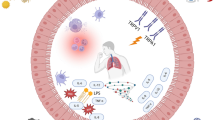Conclusions
-
1.
During the procedure of formation of a defensive conditioned reflex of pneumostome closure in a semi-intact preparation ofHelix pomatia the first effector signs of temporary connection formation appear after 25–30 combinations of the conditioned stimulus with reinforcement.
-
2.
The appearance of conditioned motor responses is the result of the appearance of spike responses, initially absent, to the conditioned stimulus in command neurons included in the arc of the unconditioned reflex of pneumostome closure.
-
3.
The main cause of the appearance of conditioned spike responses in command neurons to a previously subthreshold stimulus is increased excitability of the nerve cells.
-
4.
It is postulated that changes in the excitability of the nerve cells themselves play an important role in temporary connection formation, at least in its first stages.
Similar content being viewed by others
Literature cited
P. M. Balaban and E. G. Litvinov, Zh. Vyssh. Nerv. Deyat.,25, No. 6, 132 (1975).
P. M. Balaban and E. G. Litvinov, Zh. Vyssh. Nerv. Deyat.,27, No. 4, 438 (1977).
L. L. Voronin, Zh. Vyssh. Nerv. Deyat.,26, No. 4, 705 (1976).
B. I. Kotlyar, Mechanisms of Temporary Connection Formation [in Russian], Moscow University Press, Moscow (1977).
M. N. Livanov, Usp. Fiziol. Nauk,6, No. 3, 66 (1975).
E. G. Litvinov and P. M. Balaban, Zh. Vyssh. Nerv. Deyat.,23, No. 6, 131 (1973).
E. G. Litvinov, in: The Pacemaker Potential of the Neuron [in Russian], Metsniereba, Tbilisi (1975), p. 130.
E. G. Litvinov, O. A. Maksimova, P. M. Balaban, and B. P. Masinovskii, Zh. Vyssh. Nerv. Deyat.,26, No. 1, 203 (1976).
M. Ya. Rabinovich, The Closing Function of the Brain [in Russian], Meditsina, Moscow (1975).
V. G. Skrebitskii, E. V. Rusinova, and A. N. Chepkova, in: Memory and Trace Processes [in Russian], Pushchino-on-Oka (1974), p. 203.
V. Yu. Urbakh, Biometric Methods [in Russian], Nauka, Moscow (1964).
E. R. Kandel and W. A. Spencer, Physiol. Rev.,48, No. 1, 65 (1968).
E. R. Kandel, Cellular Basis of Behavior, Freeman, San Francisco (1976).
L. L. Voronin, Microelectrode Study of Neurophysiological Mechanisms of Conditioning, Los Angeles (1976).
A. O. D. Willows, D. A. Dorsett, and G. Hoyle, J. Neurophysiol.,36, No. 3, 207 (1973).
C. D. Woody and J. Engel, J. Neurophysiol.,35, No. 2, 230 (1972).
C. D. Woody, J. D. Knispel, T. J. Crow, and P. A. Black-Cleworth, J. Neurophysiol.,39, No. 5, 1045 (1976).
C. D. Woody, in: Proceedings of the International Union of Physiological Sciences, 27th International Congress, Vol. 12, Paris (1977), p. 604.
Author information
Authors and Affiliations
Additional information
Translated from Zhurnal Vysshei Nervnoi Deyatel'nosti, Vol. 29, No. 2, pp. 284–294, March–April, 1979.
Rights and permissions
About this article
Cite this article
Litvinov, E.G., Logunov, D.B. Changes in excitability of a command neuron in the initial period of conditioning in Helix pomatia. Neurosci Behav Physiol 10, 539–547 (1980). https://doi.org/10.1007/BF01195528
Received:
Issue Date:
DOI: https://doi.org/10.1007/BF01195528




